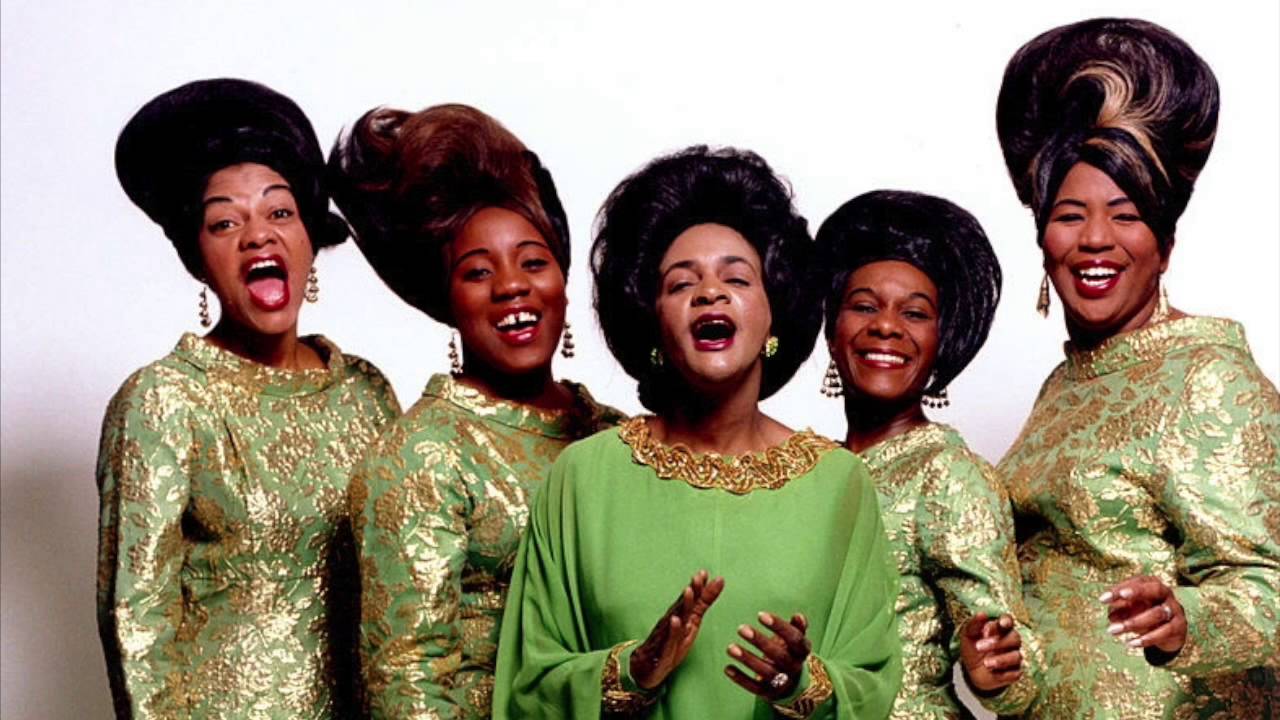The Clara Ward Singers, led by gospel singer Clara Ward, was one of the most influential and successful gospel groups in the mid-20th century. Known for their innovative performances and crossover appeal, the group helped to popularize gospel music and paved the way for its acceptance in mainstream entertainment. Clara Ward’s powerful voice, dynamic stage presence, and business acumen, combined with the group’s unique approach to gospel music, left an indelible mark on American music and culture.
Overview of the Clara Ward Singers
- Formation and Early Years: The group was originally formed as The Ward Trio in the early 1930s by Clara Ward’s mother, Gertrude Ward, who was a significant figure in managing and promoting the group. Based in Philadelphia, the trio consisted of Gertrude Ward and her daughters Clara and Willa Ward. The group began to perform at local churches and gospel conventions, eventually gaining a reputation for their energetic performances. In 1943, the group expanded into the Ward Singers, and later became known as the Clara Ward Singers, with Clara Ward emerging as the group’s primary lead singer.
- Innovative Performances and Popularity: The Clara Ward Singers were known for their lively, theatrical performances that included choreographed movements, coordinated costumes, and Clara’s charismatic stage presence. Their music was deeply rooted in traditional gospel, but they incorporated elements of blues, jazz, and pop, which helped broaden their appeal to secular audiences. Hits like “How I Got Over,” “Surely God is Able,” and “Packin’ Up” became gospel standards. Their recordings and performances resonated with both religious and secular audiences, and they were instrumental in bringing gospel music to a wider audience during the 1950s and 1960s.
- Crossover Success and Mainstream Recognition: As the Clara Ward Singers grew in popularity, they became one of the first gospel groups to perform in nightclubs, theaters, and secular concert halls, a move that was controversial in the gospel community. Despite criticism, their crossover success allowed them to perform at prestigious venues such as Carnegie Hall and the Apollo Theater. The group also appeared on television shows, including The Ed Sullivan Show, and toured internationally, helping to introduce gospel music to audiences around the world.
- Later Years and Influence: Throughout the 1960s and 1970s, the Clara Ward Singers continued to tour and record, though their popularity waned as musical tastes shifted and new gospel artists emerged. Clara Ward remained a respected figure in gospel music, and her influence extended far beyond her lifetime. She passed away in 1973, but the impact of her work continued to be felt in the gospel, soul, and R&B genres. Ward’s group became a model for future gospel ensembles, and their ability to blend traditional gospel with showmanship set the stage for the commercialization and mainstream acceptance of gospel music.
Impact on Music and Culture
- Pioneers of Gospel Showmanship: The Clara Ward Singers revolutionized the way gospel music was performed by incorporating theatrical elements into their live performances. Their highly polished, choreographed routines, matching outfits, and dynamic presentation made them one of the first gospel groups to embrace showmanship, which helped attract a broader audience and set a precedent for later gospel artists. This style of performance also influenced secular music, especially in the development of soul and R&B.
- Bridging Gospel and Popular Music: The Clara Ward Singers played a significant role in bridging the gap between gospel and popular music. By incorporating elements of jazz, blues, and pop into their gospel performances, they were able to reach both religious and secular audiences. Their crossover appeal helped gospel music gain mainstream recognition and laid the groundwork for other gospel artists, such as Mahalia Jackson and Aretha Franklin, to achieve broader success.
- Influence on Future Artists: Clara Ward’s powerful voice, vocal techniques, and performance style had a profound influence on later gospel and secular artists. Singers like Aretha Franklin, who grew up admiring Ward, drew inspiration from her ability to combine the emotional depth of gospel with technical vocal mastery. Many modern gospel choirs and groups continue to draw on the stylistic innovations introduced by the Clara Ward Singers.
- Gospel’s Path to Mainstream Acceptance: The Clara Ward Singers helped break down the barriers between gospel music and mainstream entertainment. Their ability to cross over from churches to concert halls, nightclubs, and television gave gospel music unprecedented visibility in American popular culture. Their influence is evident in the subsequent success of gospel and soul artists who brought religious music into the secular spotlight, especially during the civil rights movement, where gospel music became a soundtrack for social change.
- Cultural Legacy: Beyond their musical contributions, the Clara Ward Singers were significant figures in African American cultural history. Their success during the mid-20th century, a time of racial segregation and limited opportunities for black artists, represented a triumph of talent and perseverance. Their presence in popular culture and their widespread appeal helped elevate the status of gospel music and African American artistry in the broader American music industry.
Clara Ward YouTube Channel:
https://www.youtube.com/channel/UCjm6z158JRVOJewGA880mOw
References
- Heilbut, Anthony. The Gospel Sound: Good News and Bad Times. Limelight Editions, 1997.
- Ward, Willa, and Tony Heilbut. How I Got Over: Clara Ward and the World-Famous Ward Singers. Temple University Press, 1997.
- Boyer, Horace Clarence. The Golden Age of Gospel. University of Illinois Press, 2000.
- Reagon, Bernice Johnson. We’ll Understand It Better By and By: Pioneering African American Gospel Composers. Smithsonian Institution Press, 1992.
- Guralnick, Peter. Sweet Soul Music: Rhythm and Blues and the Southern Dream of Freedom. Back Bay Books, 1999.


Leave a Reply